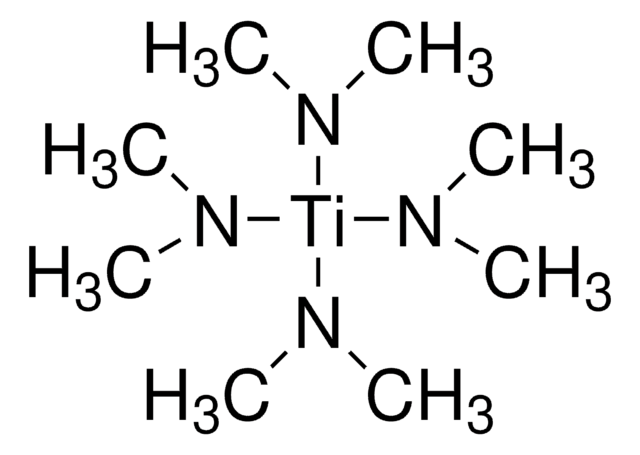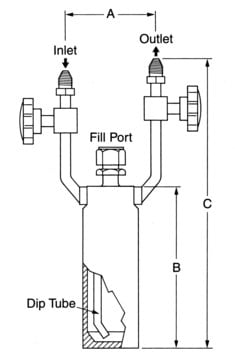663301
Trimethylaluminum
packaged for use in deposition systems
Synonym(s):
Aluminum trimethanide, TMA
About This Item
Recommended Products
vapor pressure
69.3 mmHg ( 60 °C)
Quality Level
description
heat of vaporization: ~41.9 kJ/mol (Dimer)
form
liquid
reaction suitability
core: aluminum
bp
125-126 °C (lit.)
127 °C/760 mmHg
20 °C/8 mmHg
56 °C/50 mmHg
mp
15 °C (lit.)
density
0.752 g/mL at 25 °C (lit.)
SMILES string
C[Al](C)C
InChI
1S/3CH3.Al/h3*1H3;
InChI key
JLTRXTDYQLMHGR-UHFFFAOYSA-N
Looking for similar products? Visit Product Comparison Guide
General description
Application
- A chemical vapor deposition precursor to fabricate PbSe quantum dot solids for optoelectronic devices.
- An aluminum precursor for the flame synthesis of alumina nanofibers.
- A reagent for efficient synthesis of allenes.
Signal Word
Danger
Hazard Statements
Precautionary Statements
Hazard Classifications
Eye Dam. 1 - Pyr. Liq. 1 - Skin Corr. 1B - Water-react 1
Supplementary Hazards
Storage Class Code
4.2 - Pyrophoric and self-heating hazardous materials
WGK
nwg
Flash Point(F)
No data available
Flash Point(C)
No data available
Personal Protective Equipment
Choose from one of the most recent versions:
Already Own This Product?
Find documentation for the products that you have recently purchased in the Document Library.
Articles
Atomic layer deposition (ALD) techniques have emerged in the last ten years to meet various needs including semiconductor device miniaturization, conformal deposition on porous structures and coating of nanoparticles. ALD is based on two sequential self-limiting surface reactions.
Atomic Layer Deposition (ALD) is a coating technology that allows perfectly conformal deposition onto complex 3D surfaces. The reason for this uniform coating lies in the saturative chemisorption of sequential cycles of precursor vapors.
Nanocomposite Coatings with Tunable Properties Prepared by Atomic Layer Deposition
Since the demonstration of the first practical solar cell 60 years ago, research on novel materials, improved solar cell design and structure, and innovative manufacturing processes have all contributed to a continuous increase in the efficiency of photovoltaic (PV) devices.
Our team of scientists has experience in all areas of research including Life Science, Material Science, Chemical Synthesis, Chromatography, Analytical and many others.
Contact Technical Service








